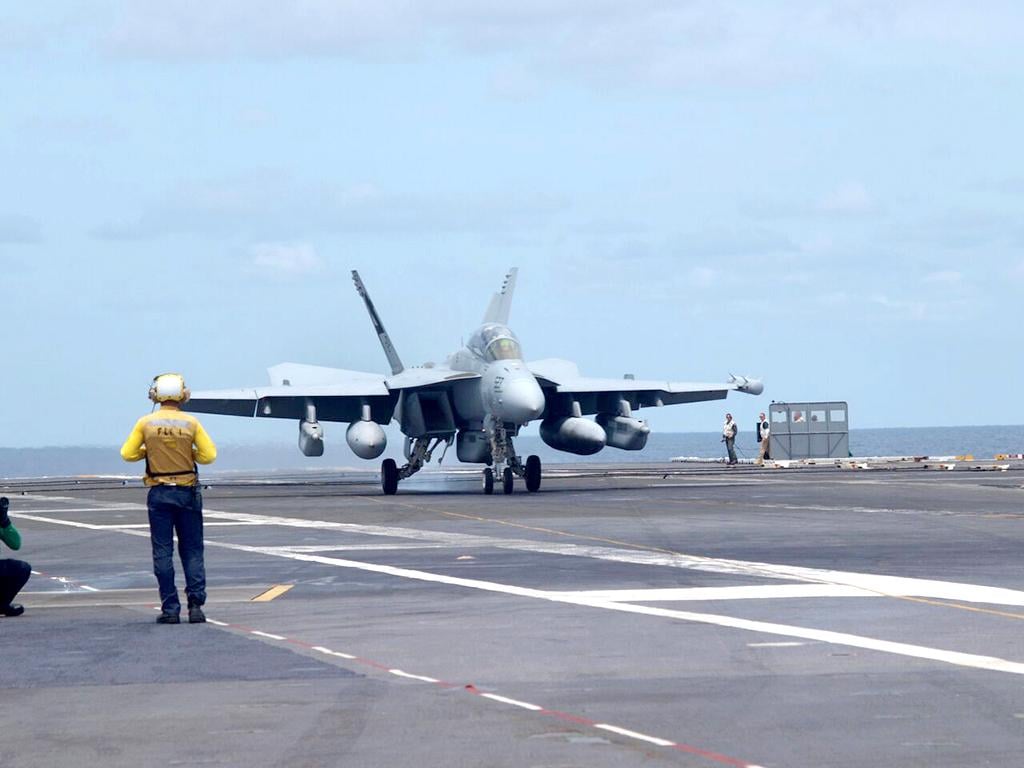
How Aircraft Carrier Barriers Protect Lives on the Ocean
Landing on an aircraft carrier is considered one of the most difficult feats in aviation. Pilots need to navigate toward a small, moving flight deck, typically under poor weather conditions, and halt completely within just a few hundred feet. Small errors in speed, height, or positioning can lead to severe accidents. In the initial stages of carrier flying, these types of incidents were frequent, prompting the development of safety protocols to reduce deaths. One of the most essential devices created for this reason is theaircraft carrier barricade system.
A Narrow Escape on the Aircraft Carrier Deck
One of the first documented events requiring a barrier took place whenCaptain George Duncan, a test pilot, was piloting anF9F-5 Panther. While attempting to land, the aircraft descended below the correct approach path and collided with the edge of the flight deck, causing it to split in two. Due to the quick actions of the flight deck team, Captain Duncan was rescued from the debris and the subsequent fire was swiftly put out. Surprisingly, he resumed flying duties within six months and eventually went on to work in the legal field.
The Development of Safe Landings
Today, airline pilots follow a process called a“bolter”during landing procedures. If an aircraft engages one of the arresting cables upon touching down, it stops completely. If this doesn't happen, the pilot uses maximum power to continue along the sloped deck and regain altitude, trying again for a landing. This approach enables pilots to correct small mistakes without colliding with other planes parked nearby.
In the initial phase of carrier aviation, flight decks were level, offering minimal room for mistakes. Aircraft frequently landed in front of other stationary planes, raising the possibility of crashes. To address these hazards, emergency measures were implemented.flight deck barrierswere positioned at the conclusion of the runway. These barriers, generally around three feet in height, were lowered following successful landings to allow aircraft to park.
If a pilot's tail hook or landing gear malfunctioned, the barrier wires could stop the aircraft from hitting deck personnel or other planes. Nevertheless, crashing into the wires frequently resulted in considerable damage and occasionally fires, creating a major danger for both pilots and crew.
Modern Emergency Recovery Systems for Barriers
Today's service providers have substituted conventional wired fences withbarricade netting, which looks like a large tennis net. The modernbarricade emergency recovery systemfeatures several attachment straps, approximately 20 feet in height, designed to securely dissipate the energy of an aircraft that is unable to land properly.
As the aircraft approaches the barricade, the release straps snap, and the plane is slowly secured by the engagement straps. The force is transferred to abarricade enginelocated beneath the deck using a network of pulleys. These emergency systems are usually stored and only used when a tail hook or landing gear issue arises. A well-trained team can install a barricade in less than three minutes, providing quick action for sudden flight deck emergencies.
Once a successful apprehension is completed, the webbing and deck cables are repositioned and stored, prepared for subsequent use. Although uncommon, barrier landings continue to be an essential part ofaircraft carrier safety protocols.
Protecting Lives and Equipment
Although hitting a barricade can be unsettling for pilots and may result in aircraft damage, it is much safer compared to the risk of an uncontrolled crash. Over the years, these systems havesaved numerous lives, highlighting their essential role. For flight deck teams and naval pilots, having a properly maintained barrier offers reassurance, knowing that a controlled halt is achievable even if a mistake happens.
Modern barrier systems are enhanced by sophisticated training, simulation, and flight deck protocols, all aimed at reducing danger. The blend of technology and experienced staff ensures that aircraft carrier operations continue to be among themost secure and accurate in military aviation.
The Takeaway
Aircraft carrier barriers might not be exciting, but their effect is clear. They turn dangerous landing mistakes into controlled situations, protecting both people and important military equipment. Each American aircraft carrier has these safety systems in place, showing the Navy's dedication tooperational safety and readiness.
Although they wish they would never need it, pilots and crew members recognize that in case of an emergency, the barricade is present to safeguard them—a hidden, life-saving barrier at the edge of the world's most challenging flight decks.